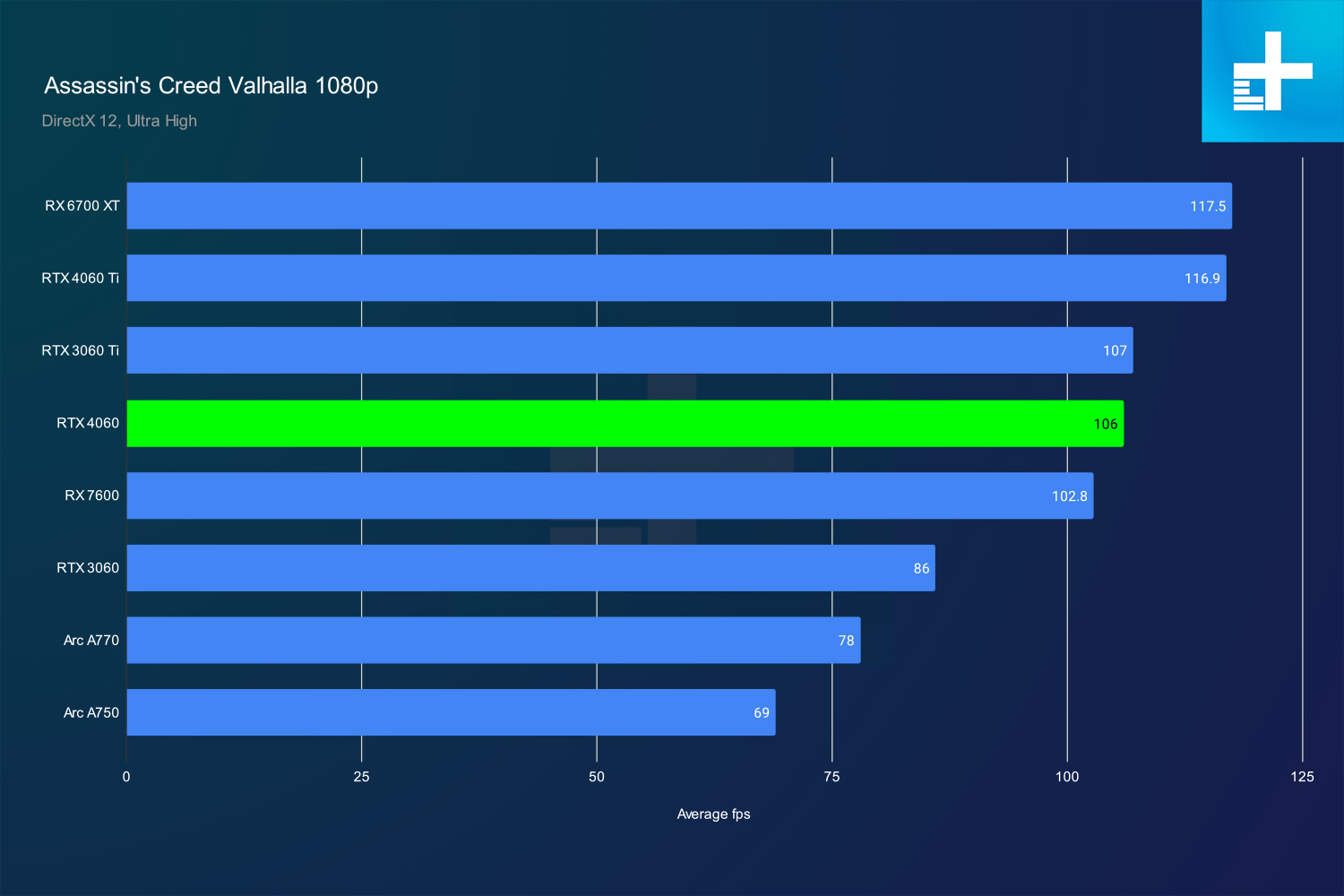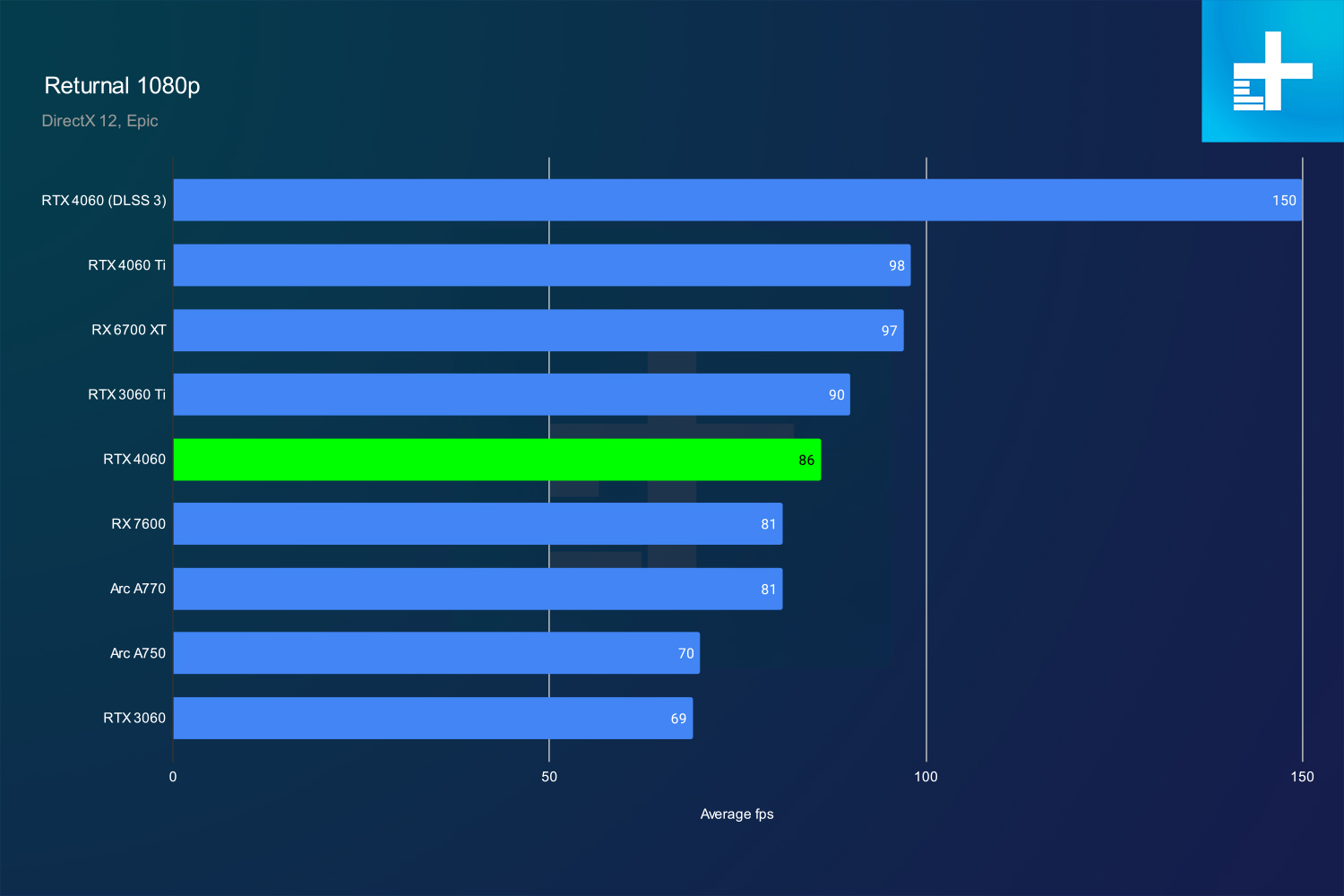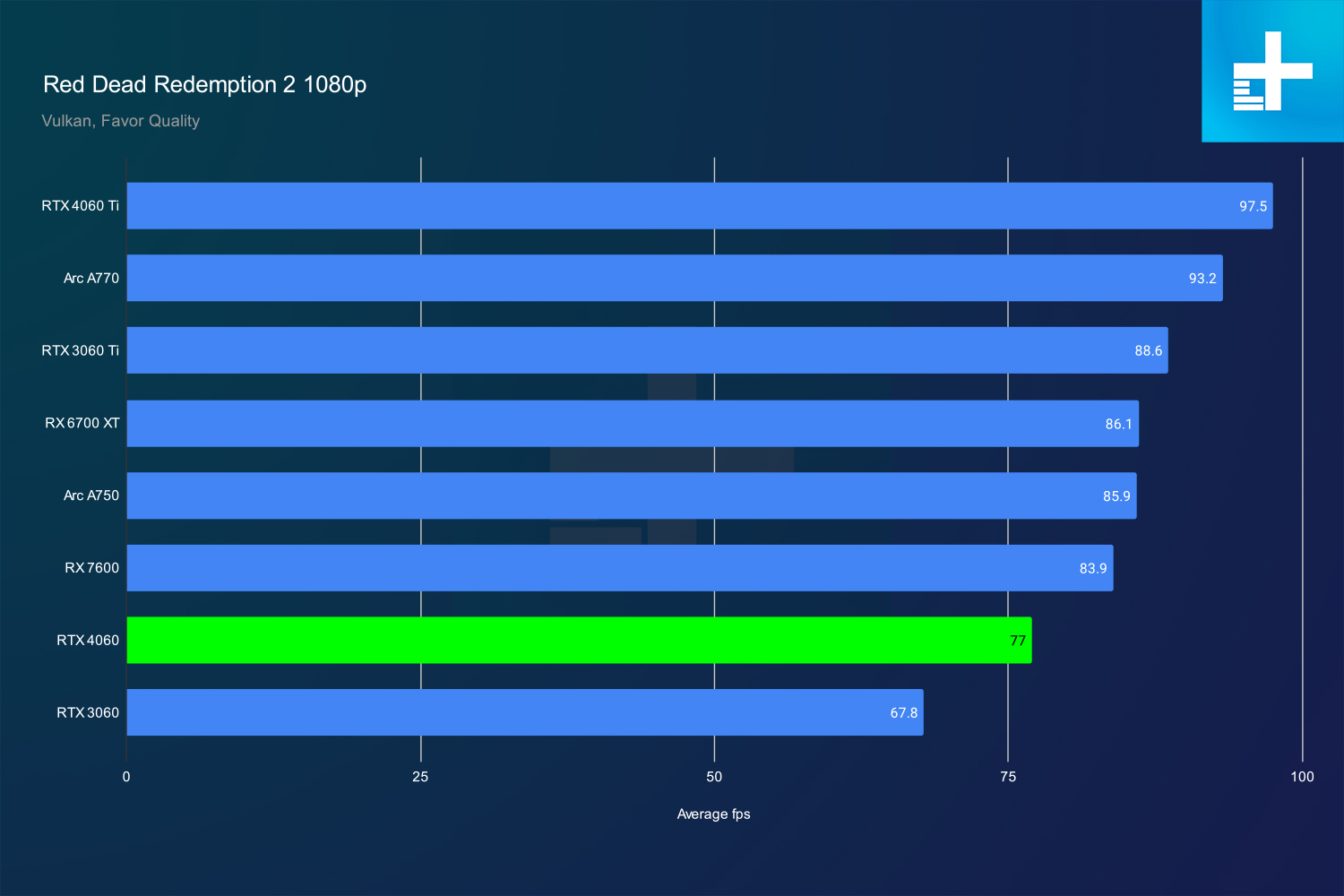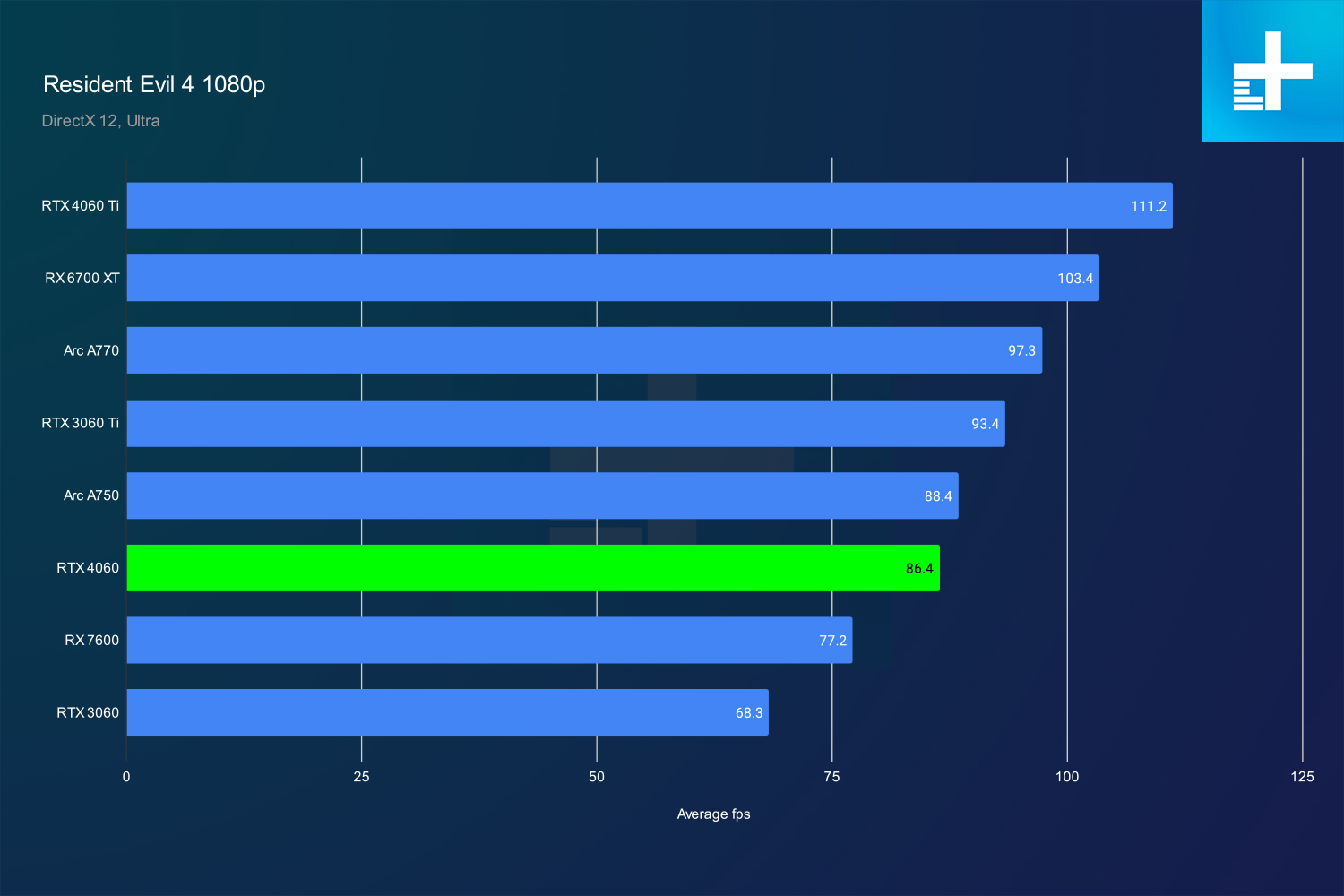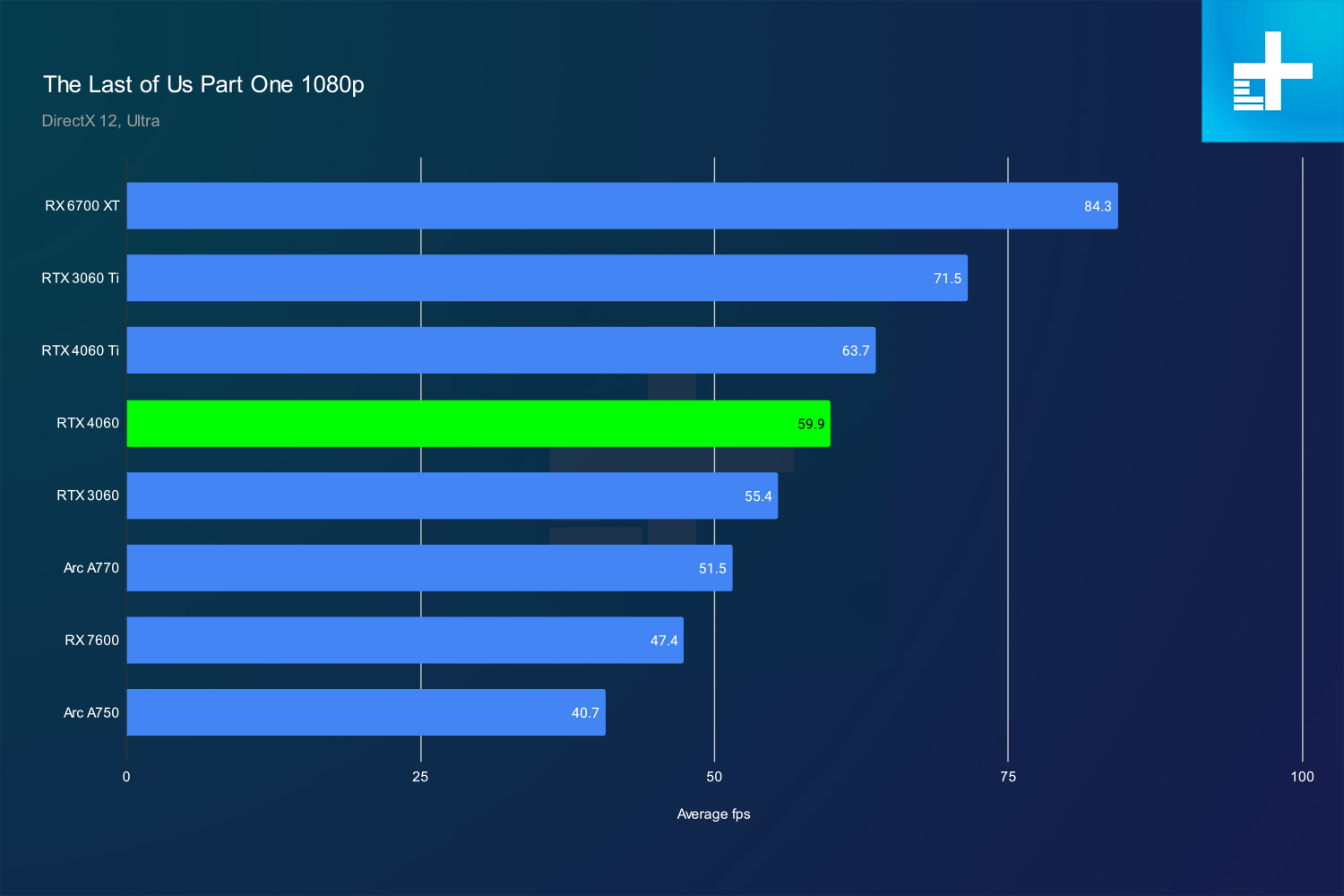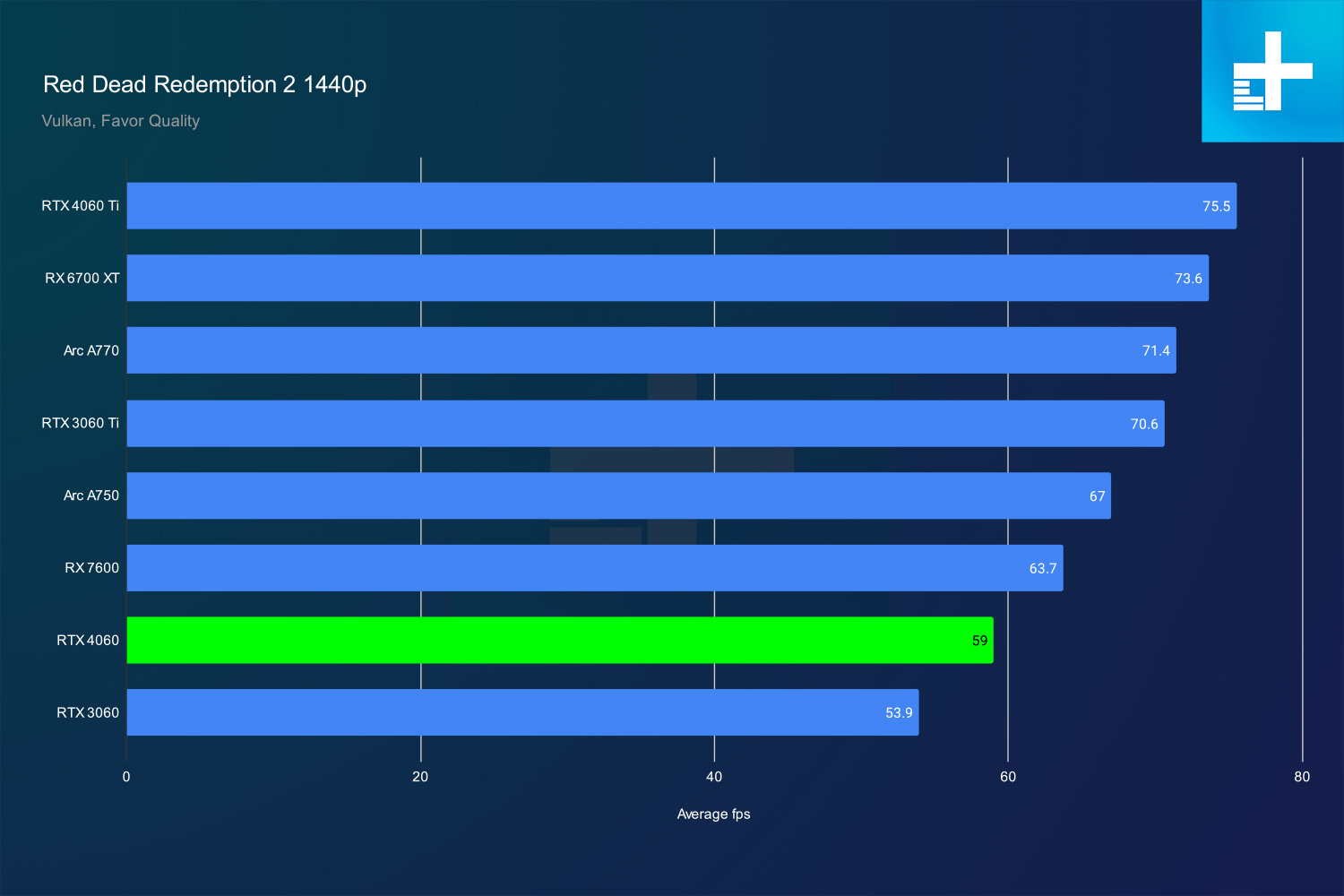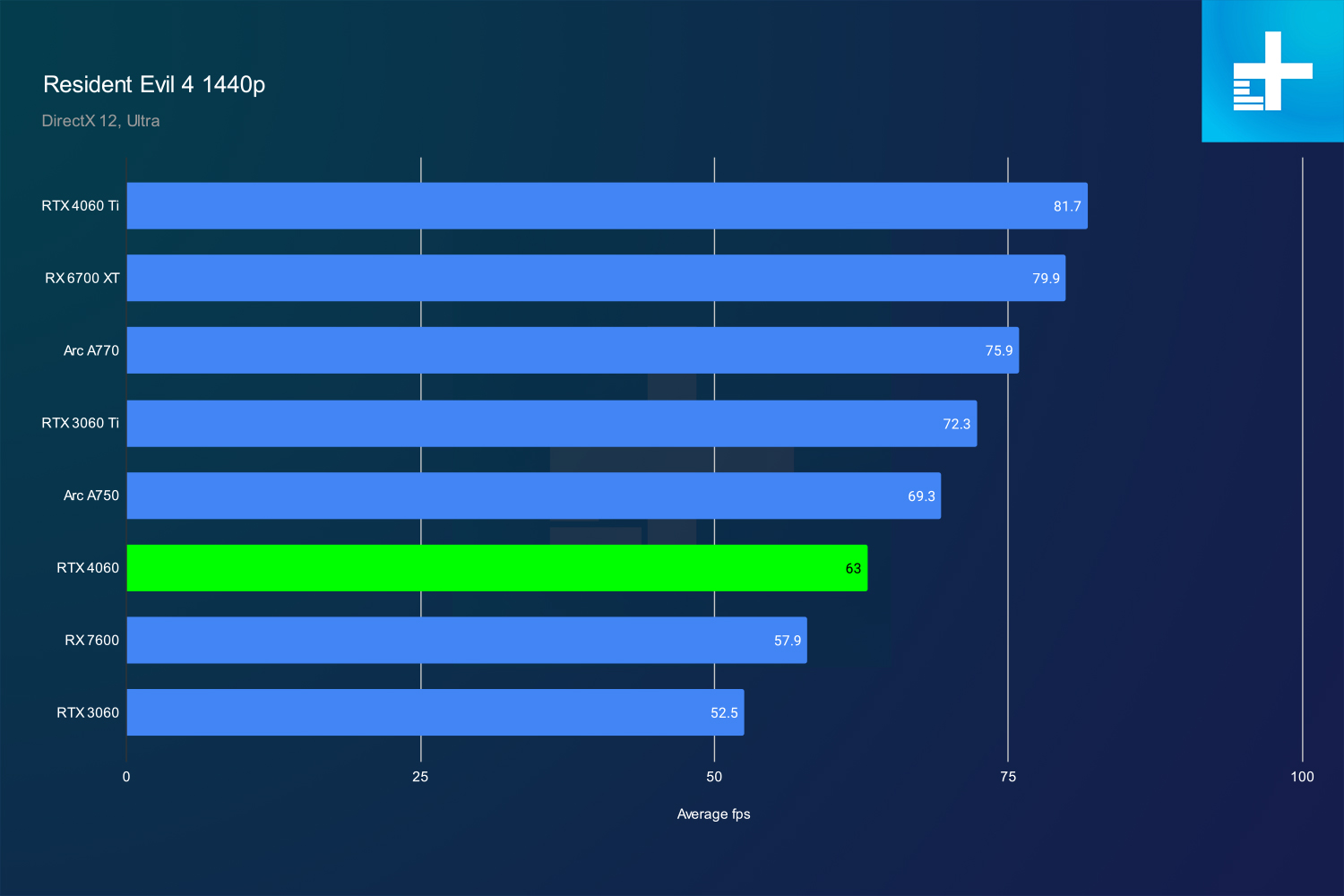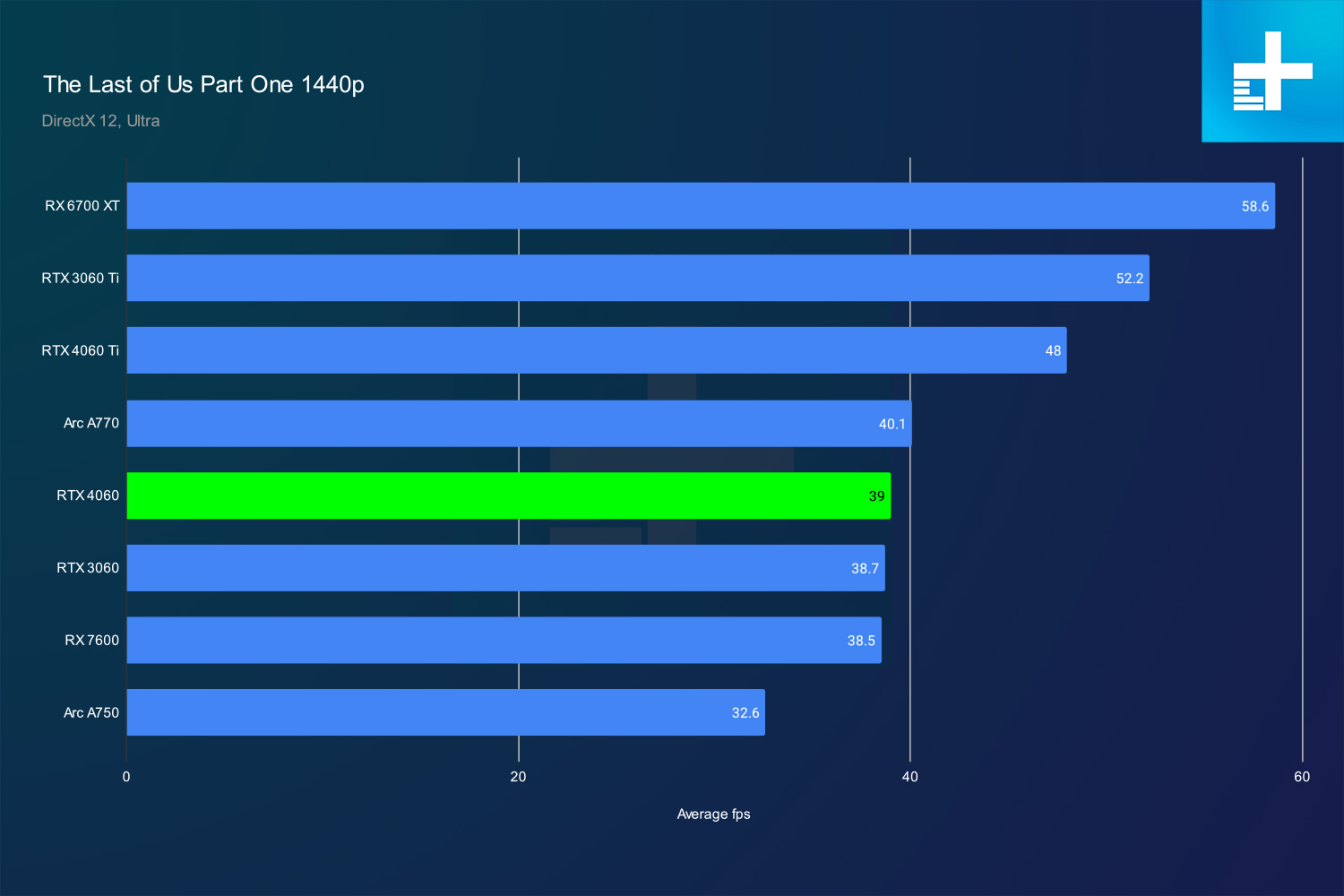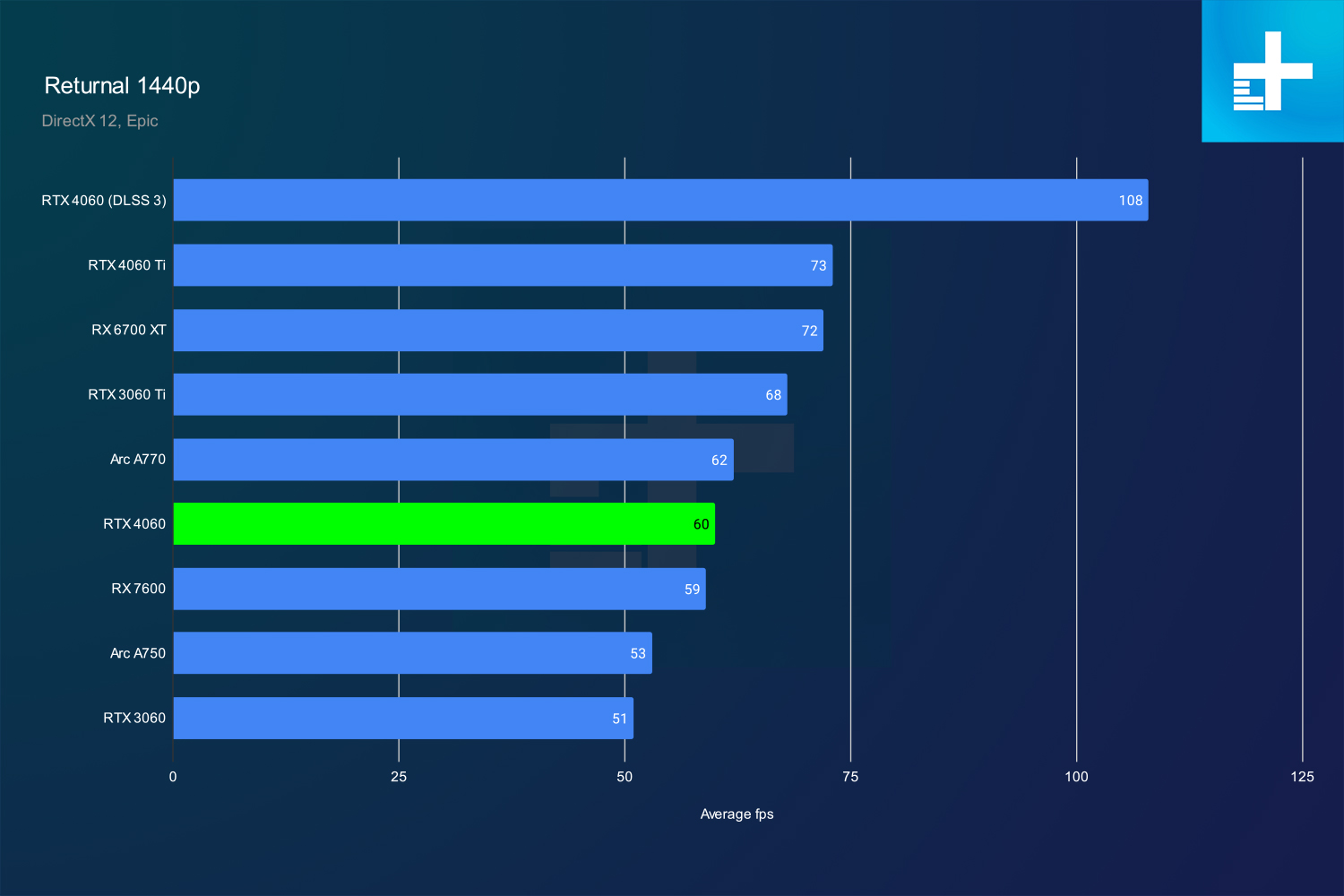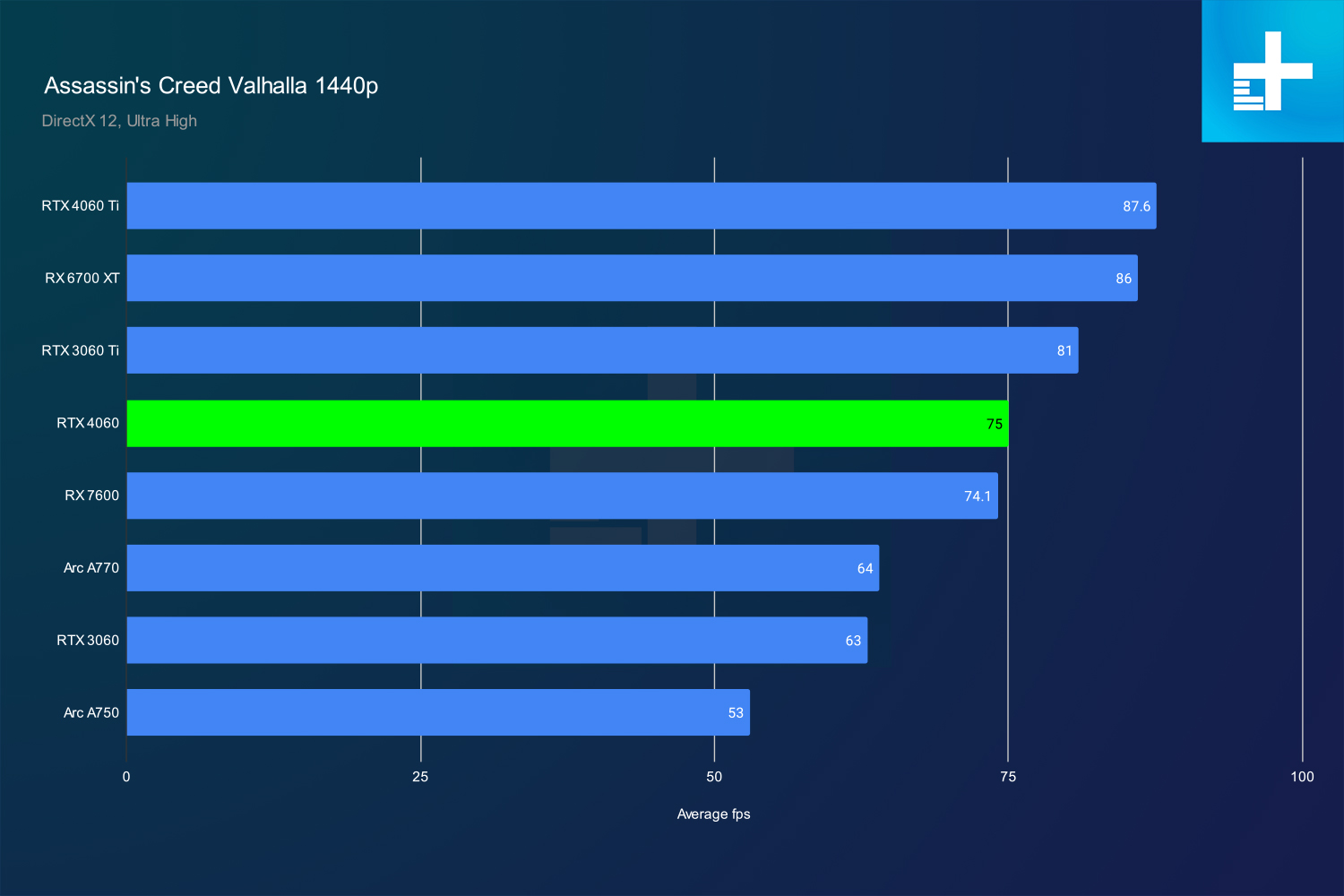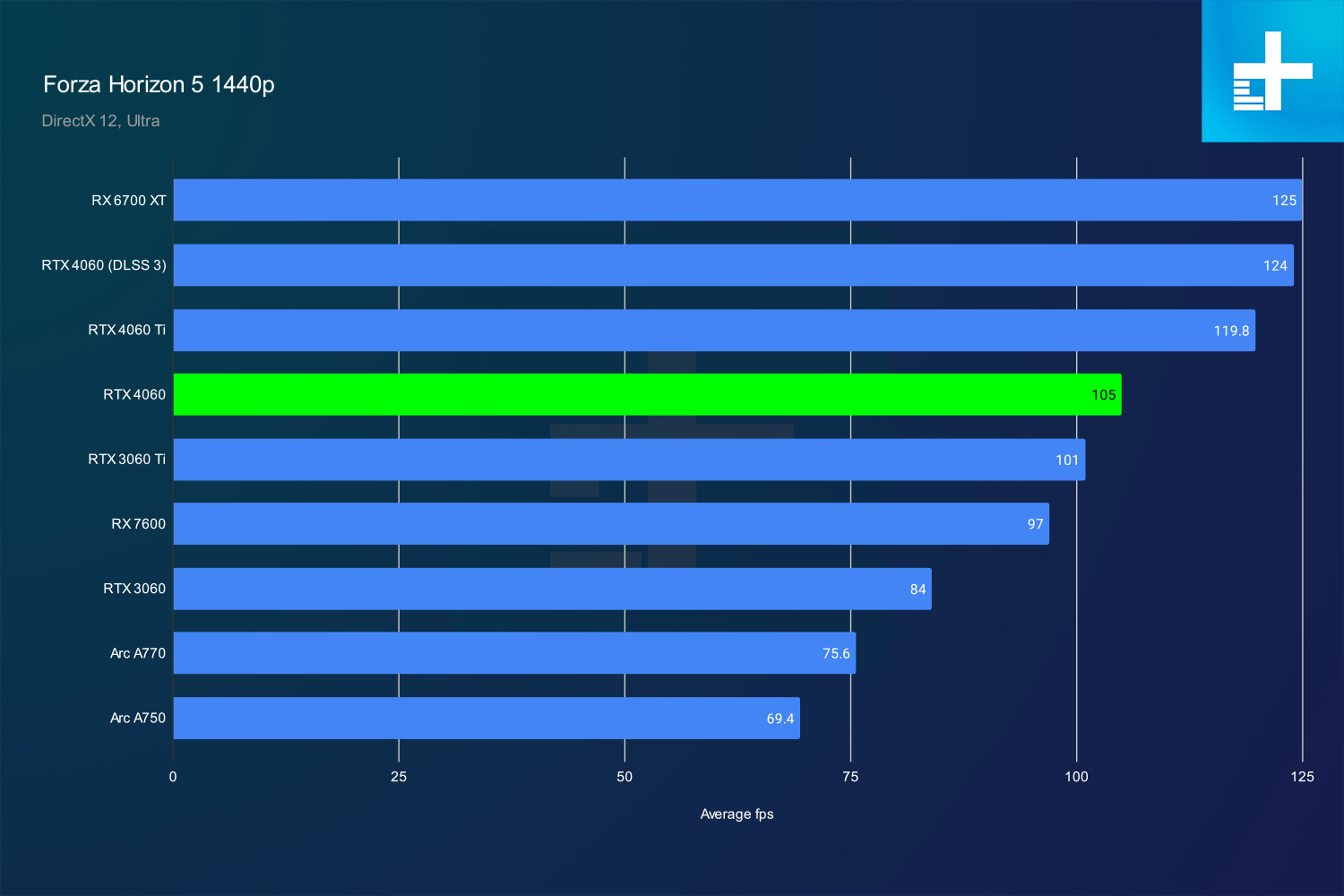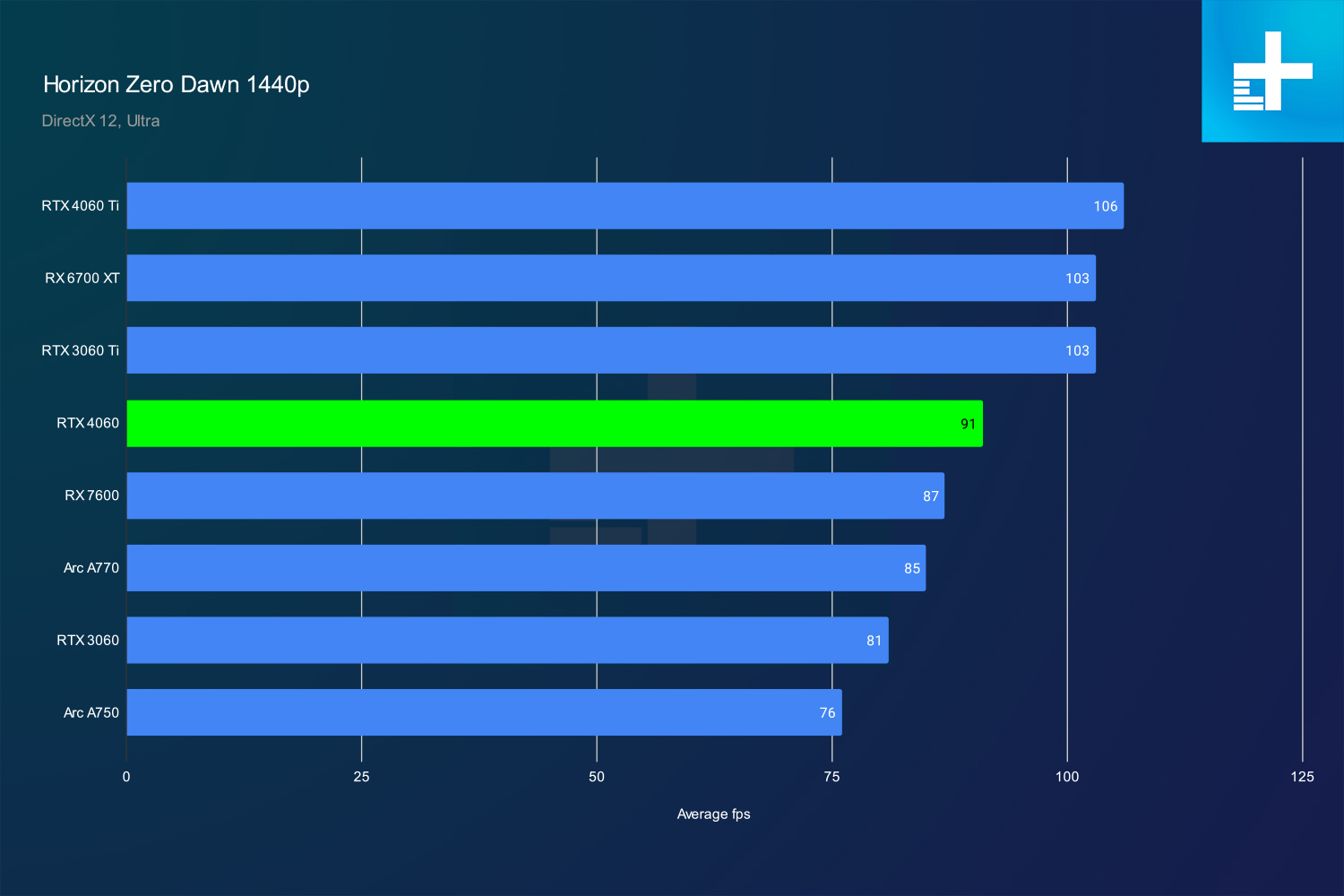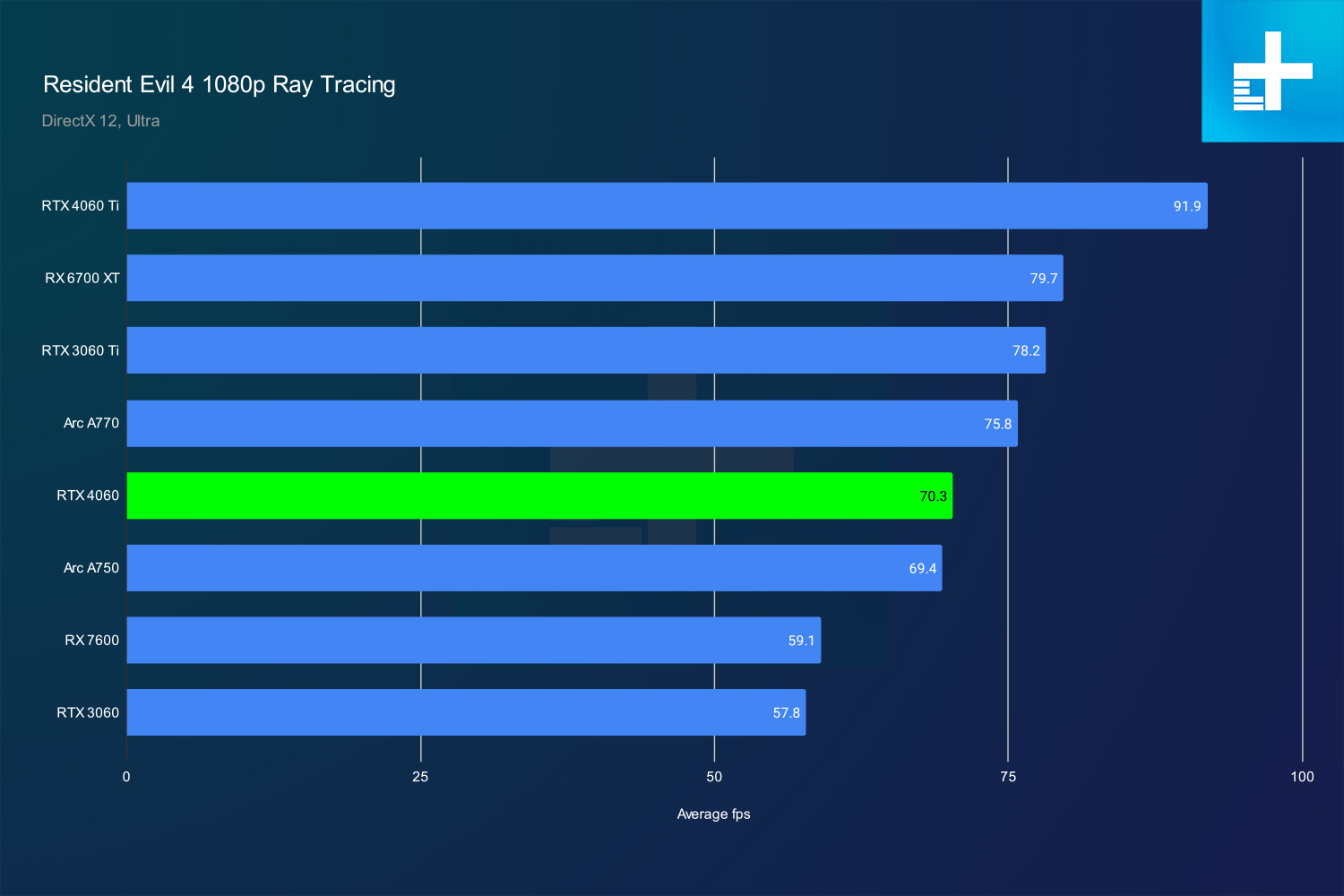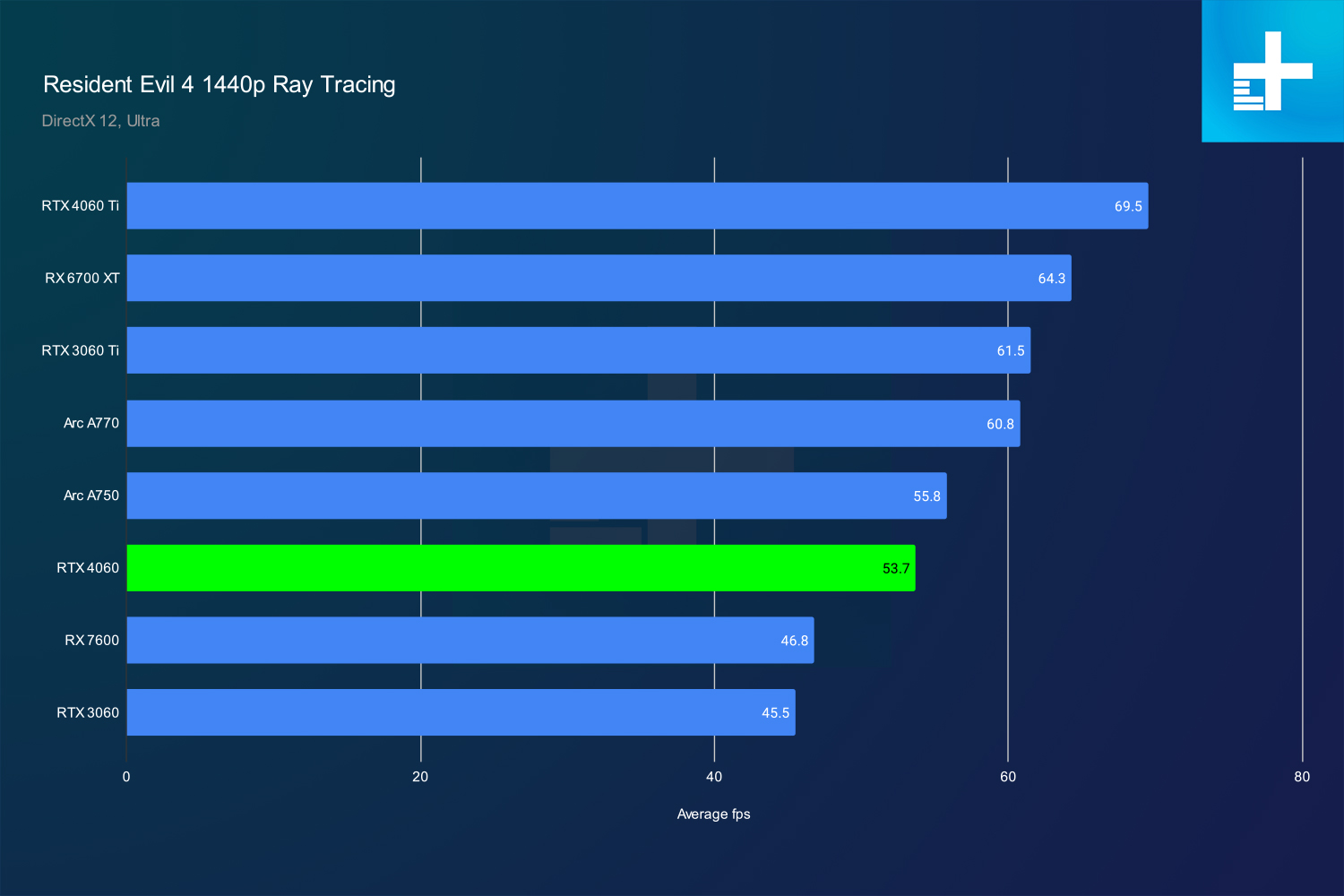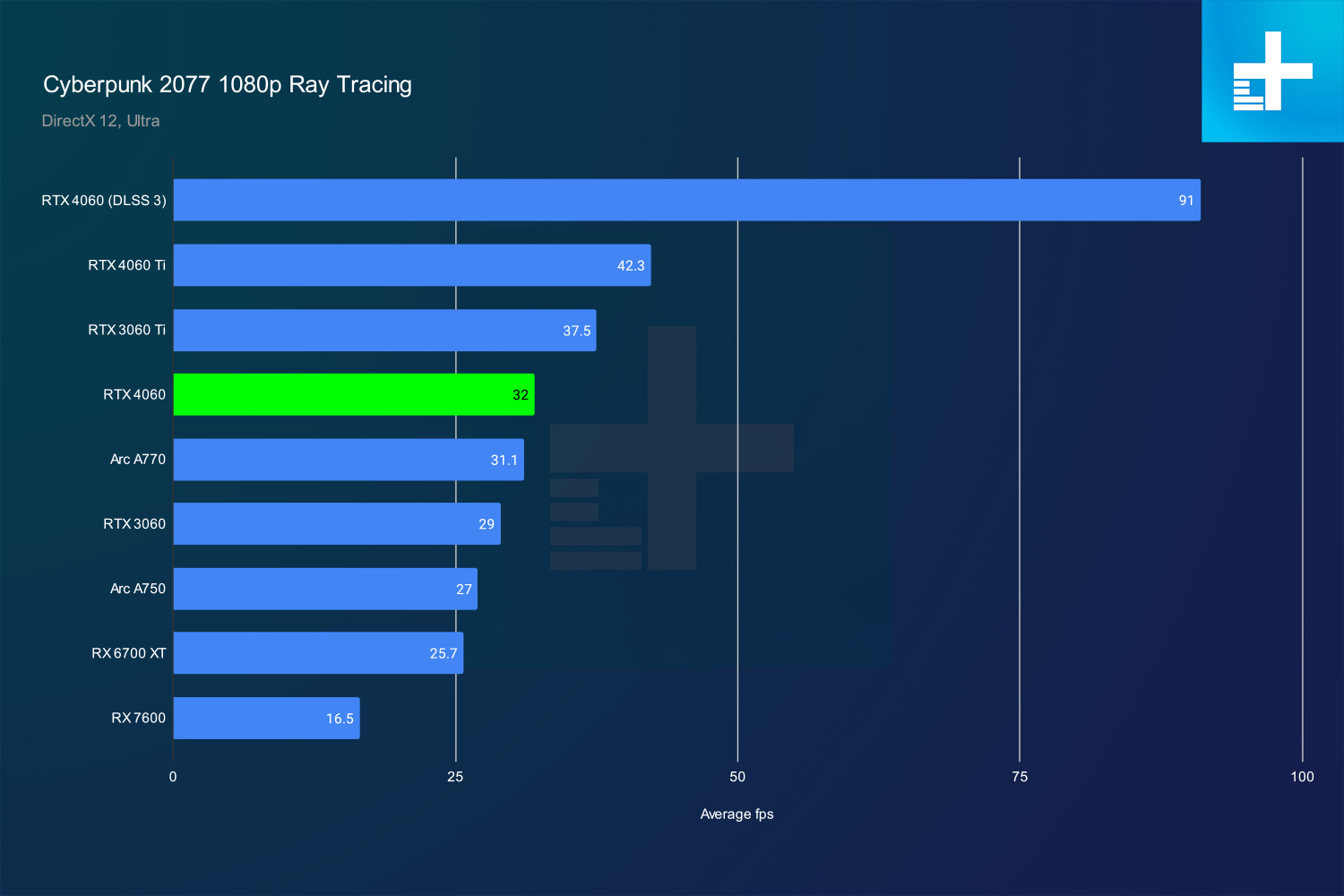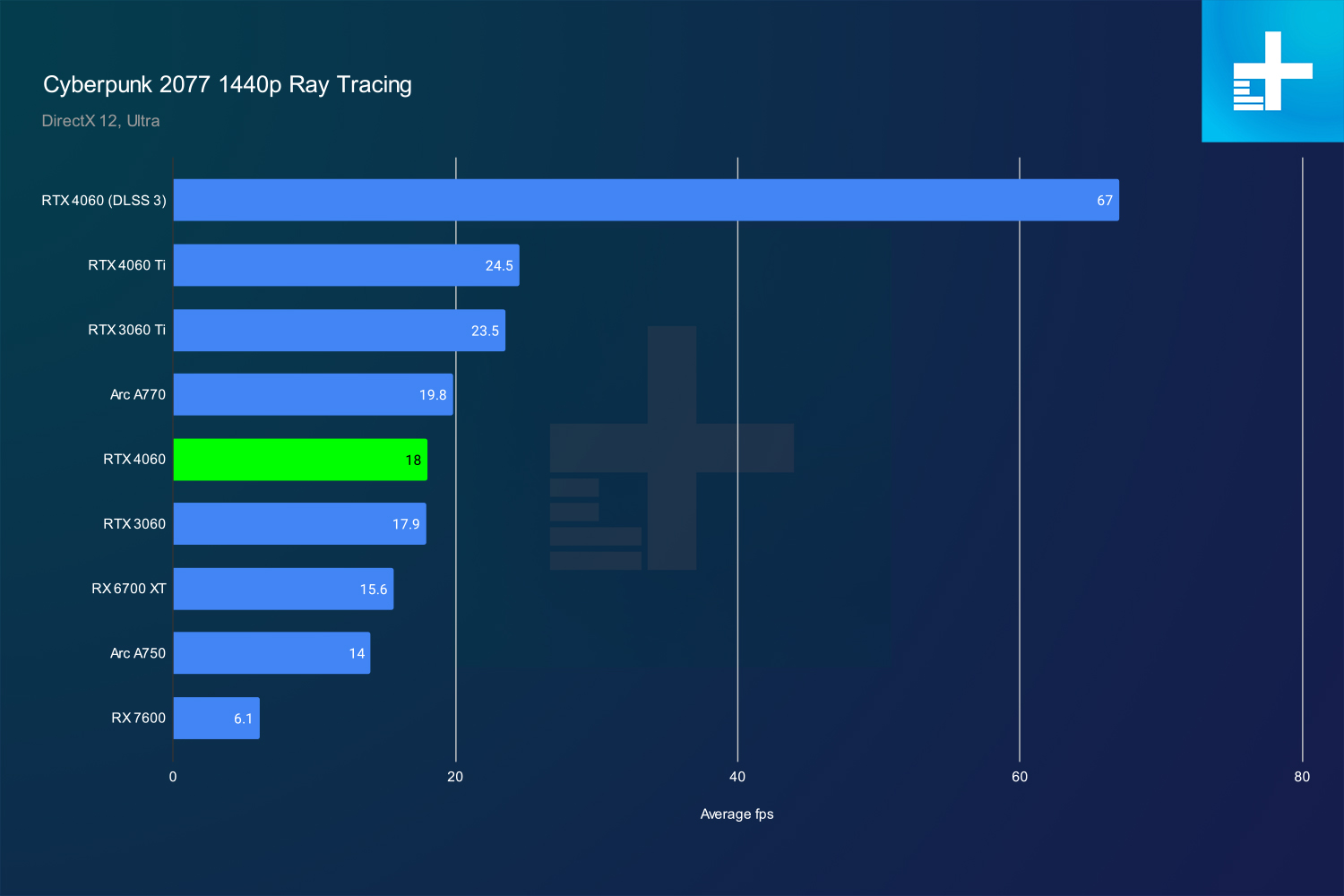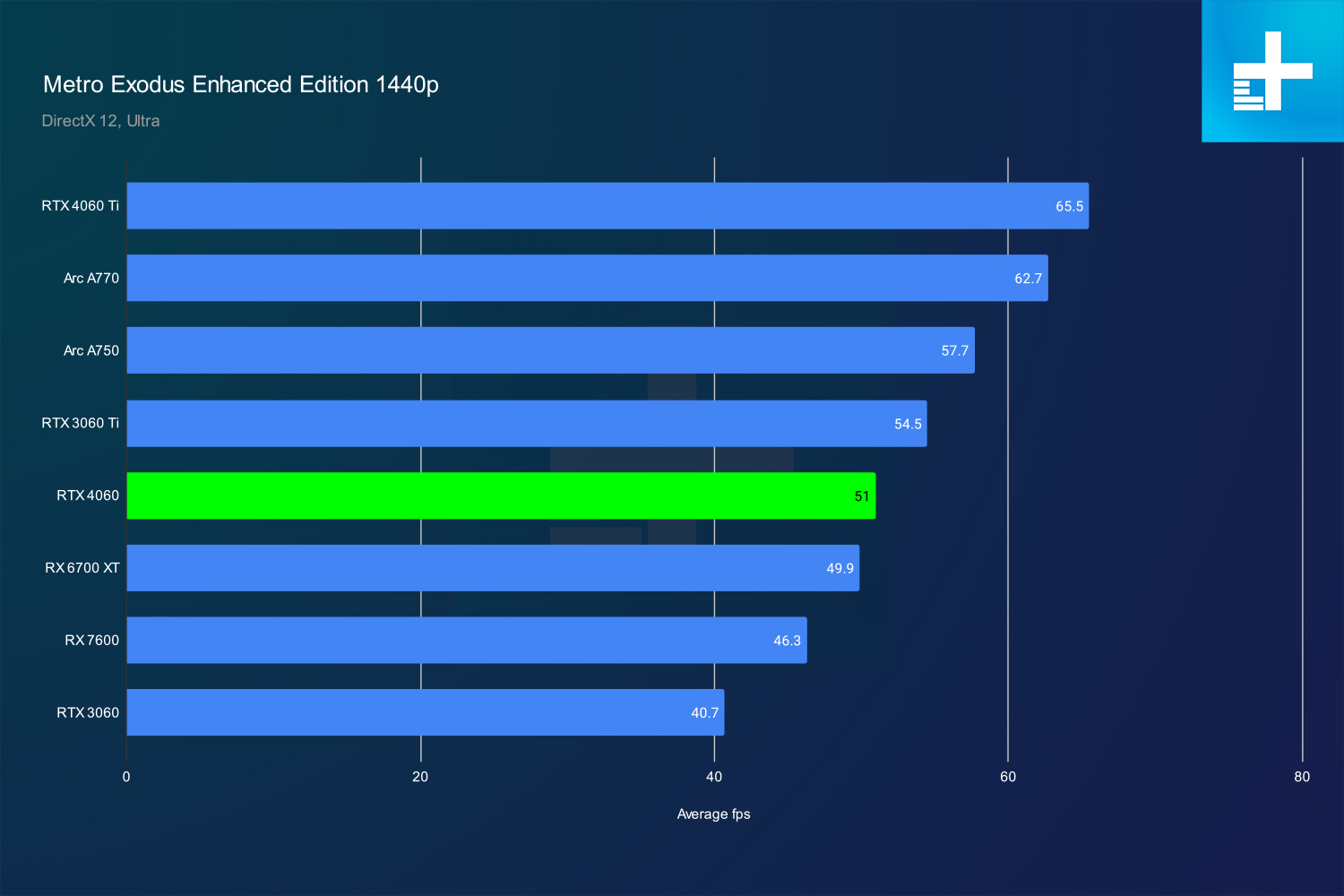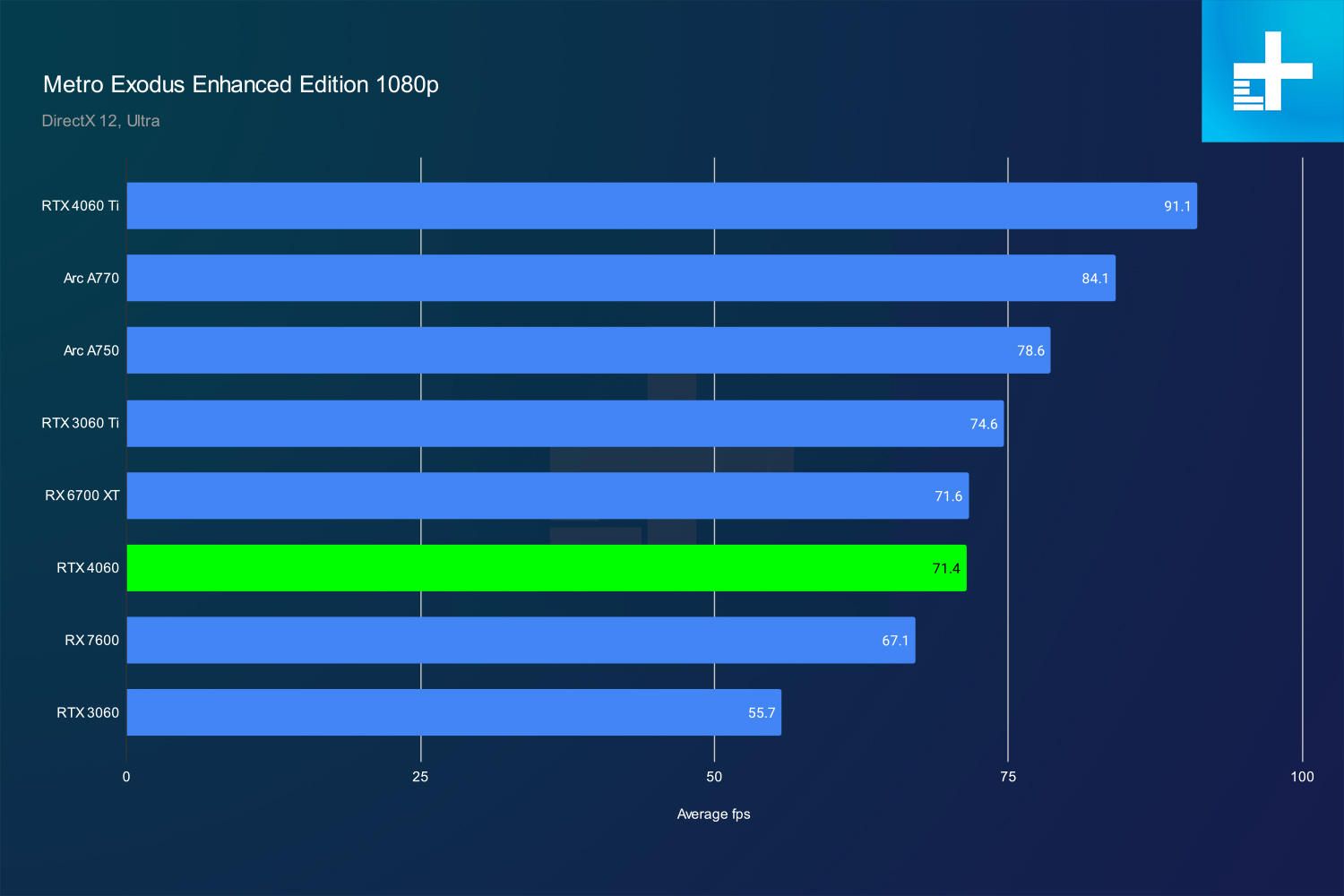“The RTX 4060 is the cheapest way to get DLSS 3, but it remains a disappointing GPU.”
- DLSS 3
- Excellent efficiency
- Price reduction compared to last-gen
- Strong ray tracing performance
- Beaten by cards that are only $30 more
- Limited memory interface
- Weak at higher resolutions
In the past, the RTX 4060 would have been classified as a workhorse GPU. These have been a staple of PC builds in the past, hitting that standard of 60 fps (frames per second) at 1080p at an affordable price without any special tricks.
The RTX 4060 falls short of filling that post, offering solid generational improvements but middling competitive performance, and relying on DLSS 3 and
It’s not a bad
Nvidia RTX 4060 specs

Specs are important for the RTX 4060, as it marks a significant departure compared to the previous generation. The card uses Nvidia’s new Ada Lovelace architecture, but it comes with a core reduction compared to the last-gen version. It also cuts down on the memory and memory bus, leading to over bandwidth.
| RTX 4060 | RTX 3060 | |
| Architecture | Ada Lovelace | Ampere |
| Process node | TSMC N4 | Samsung 8nm |
| CUDA cores | 3,072 | 3,584 |
| Ray tracing cores | 24 | 28 |
| Tensor cores | 96 | 112 |
| Boost clock speed | 2,460MHz | 1,777MHz |
| VRAM | 8GB GDDR6 | 12GB GDDR6 |
| L2 cache | 24MB | 3MB |
| Memory bandwidth | 272 GB/s (453 GB/s effective) | 360 GB/s |
| Bus width | 128-bit | 192-bit |
| Total Graphics Power (TGP) | 115 watts | 170 watts |
| List price | $300 | $330 |
It’s not quite as simple as a spec-to-spec comparison, however. The RTX 4060 comes with a massively boosted L2 cache, leading to higher effective memory bandwidth, according to Nvidia. It’s not dissimilar from AMD’s Infinity Cache, though we’ve already seen how 8GB of VRAM on a small memory bus can limit modern games, and as I’ll dig into shortly, the RTX 4060 isn’t above those problems.
There are moves elsewhere, too. Nvidia has massively dropped the power down to only 115 watts, putting on full display the efficiency of Nvidia’s latest architecture. The card also comes with a price reduction, which has been rare in the age of GPUs like the RTX 4090, offering up the RTX 4060 for $30 less than the previous-gen model.

The specs leave us in a weird spot before getting into performance. Although I won’t argue with higher efficiency and a better price, the RTX 4060 looks markedly cut down compared to the previous-gen version with fewer cores, less VRAM, and a thinner memory bus.
It offers better performance, as my benchmarks show, but I’m left wondering what the RTX 4060 would’ve looked like with the same memory interface as the RTX 3060.
1080p gaming

Unlike the RTX 4060 Ti, the RTX 4060 is firmly a 1080p
The generational improvements are here, though. The RTX 4060 is around 19% faster than the RTX 3060, closely aligning with Nvidia’s performance claims. It’s also nearly 12% faster than the RX 7600, probably explaining why that card has recently dropped to around $250.

There’s a little more to the story as we dig into the benchmarks, though. As Cyberpunk 2077 shows, the RTX 4060 is slower than even the RX 7600 and barely faster than the $250 Arc A750. You can hang your hat on Nvidia’s Deep Learning Super Sampling (DLSS) with Frame Generation to boost your performance. However, down at 1080p, DLSS 3 isn’t providing the two or three times performance improvement we see at higher resolutions or when

Sometimes DLSS 3 isn’t providing a huge improvement over super resolution methods, as showcased by Forza Horizon 5. However, the RTX 4060 offers much better raw performance in this game, easily bypassing the RTX 3060 Ti, though falling short of the RX 6700 XT.
In a lot of games, the RTX 4060 dances around the RTX 3060 Ti, falling just short of it. Returnal, Horizon Zero Dawn, and Assassin’s Creed Valhalla are prime examples. The RTX 4060 provides a sizeable uplift over the RTX 3060 in both games, but Nvidia’s latest GPU is in an awkward spot. The RTX 3060 Ti and RX 6700 XT offer better performance for around $20 to $30 more, while the RX 7600 is closely behind for $30 to $50 less.
These are the best showcases of the RTX 4060, though. In Resident Evil 4 and Red Dead Redemption 2, it’s shockingly slow. In
No doubt, the RTX 4060 has some advantages. Its
1440p gaming

Although I can recommend the RTX 4060 at 1080p with caveats, I can’t recommend it at 1440p. It slips below the Arc A770 and falls even further behind the RTX 3060 Ti and RX 6700 XT due to its constrained memory interface and limited core count. More disappointing is that its generational improvement falls to 14%, and it’s only around 10% faster than the RX 7600 and Arc A750.

Once again, this average includes
It’s not just Cyberpunk 2077. The RTX 4060 takes a backseat in both Red Dead Redemption 2 and
There are bright spots. Once again, Forza Horizon 5 shows strong performance. As I’ve seen with other RTX 40-series GPUs, it seems Nvidia’s latest generation is particularly optimized for this game. And in Assassin’s Creed Valhalla, the RTX 4060 claims a slight lead over the RX 7600, as well as both Arc GPUs.
It’s hard to find a big win for the RTX 4060 at 1440p, though. In some games, the $250 RX 7600 and Arc A750 straight-up beat it, and in others, those two GPUs aren’t far behind. And, if you can increase your budget, both the RTX 3060 Ti and RX 6700 XT offer universally better performance. Those two cards also come with a more generous memory interface, allowing them to reach much higher performance in constrained titles like
Ray tracing and DLSS 3
The RTX 4060’s big win is in
It’s a win for the RTX 4060, but Nvidia isn’t claiming the
There’s no doubt that
A lot of caveats

It’s hard to place the RTX 4060. Increasingly, it seems the current-gen and last-gen options need to sit side-by-side, and careful management of prices across the weak GPU market has ensured the RTX 4060 isn’t priced poorly. If you look at your options right now, you can save some money with the Intel Arc A750 or AMD RX 7600, while sacrificing features like DLSS 3 and a hair of performance. And on the other end, you can spend an extra $30 for an RX 6700 XT or RTX 3060 Ti for universally higher performance, even if it means passing on DLSS 3.
The problem with the RTX 4060 is that both of those seem like better options. DLSS 3 is an attractive option, but it’s only available in a small pool of games right now. And unlike some other RTX 40-series GPUs we’ve seen, the RTX 4060 doesn’t make any sense without DLSS 3 factored into the equation.
If you’re strictly limited to $300, the RTX 4060 serves its purpose as a 1080p


